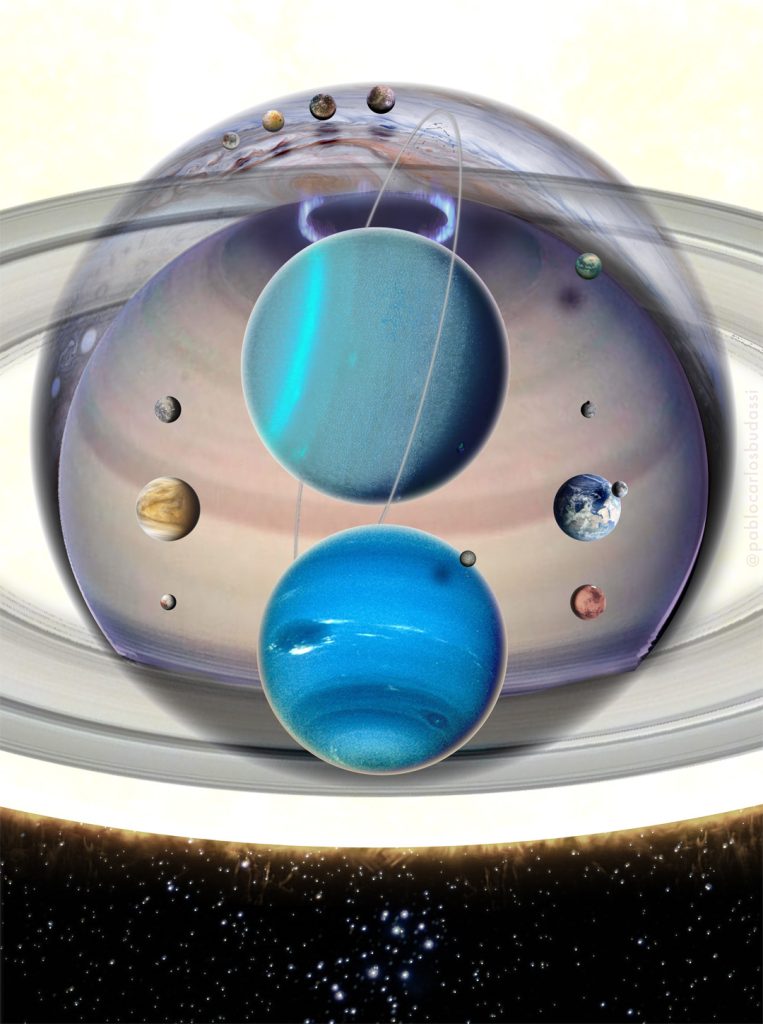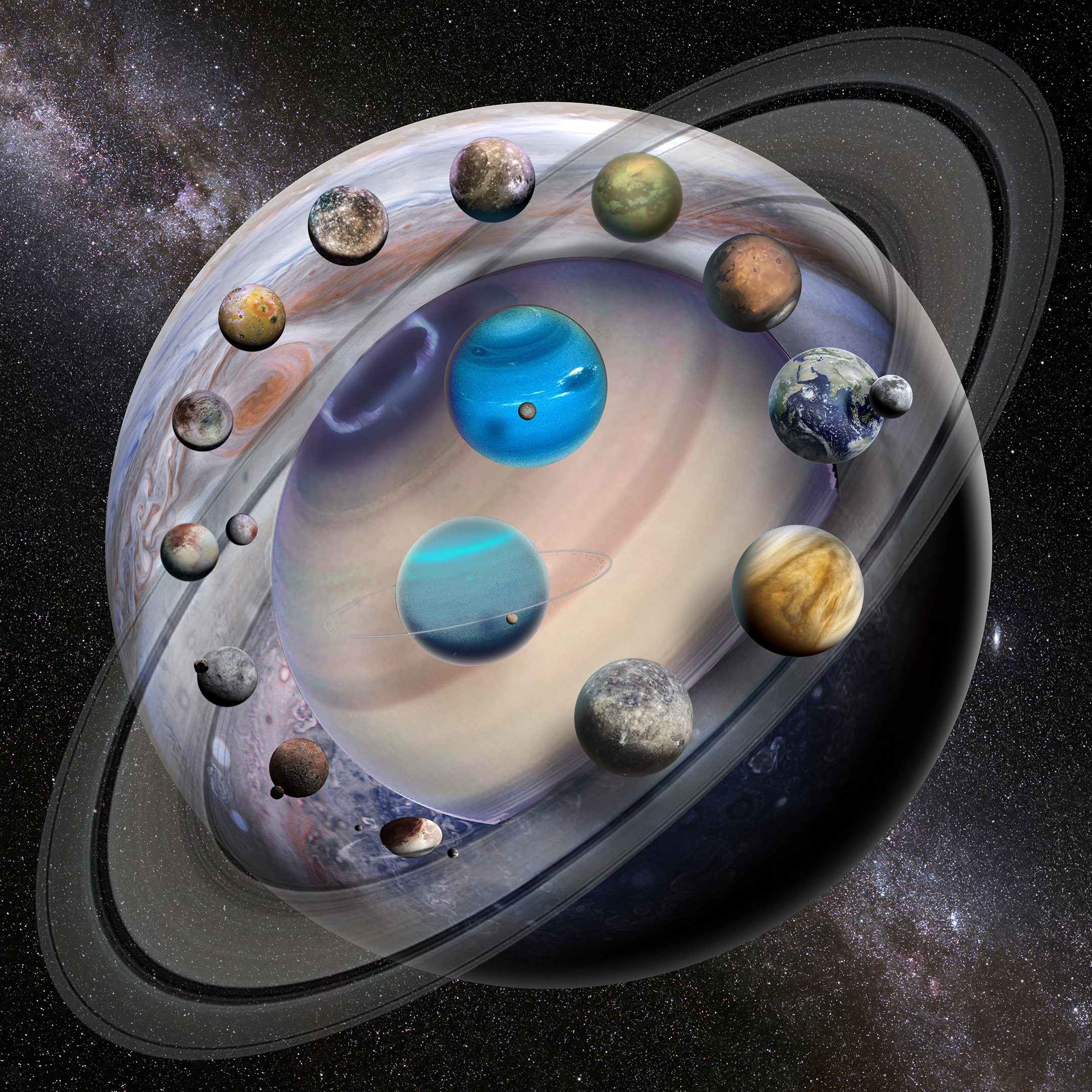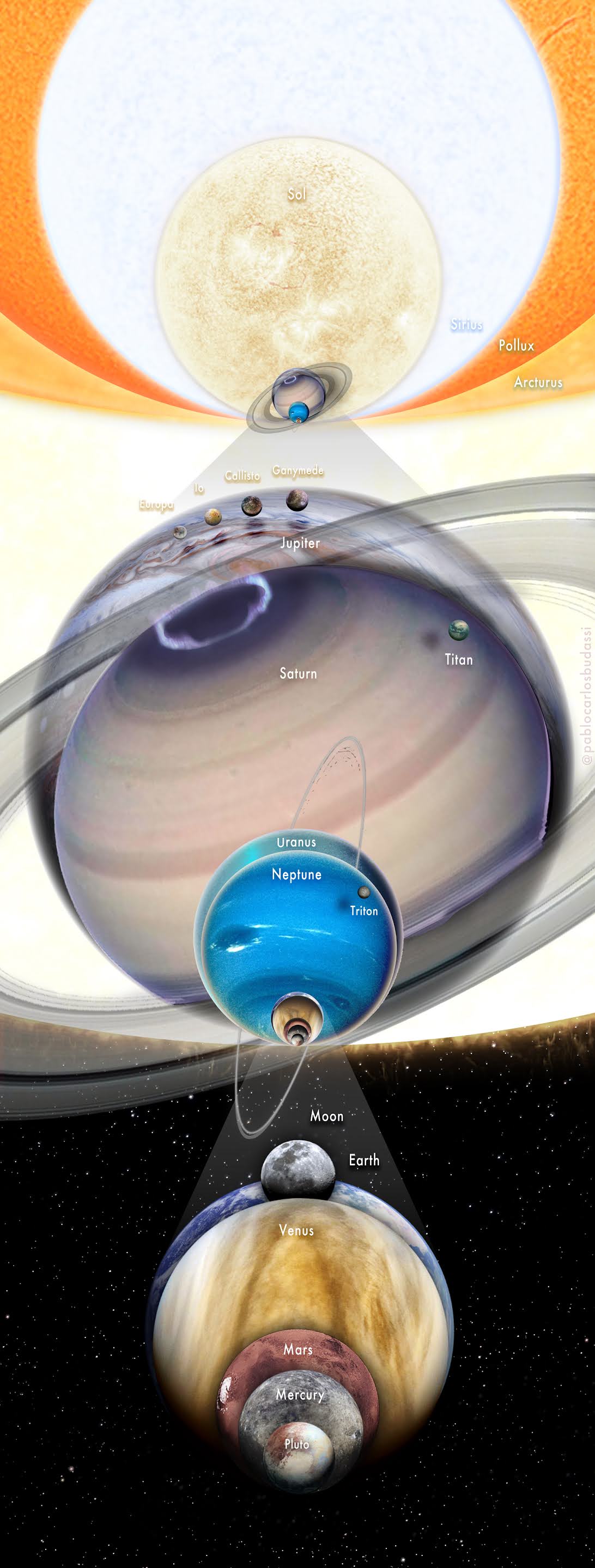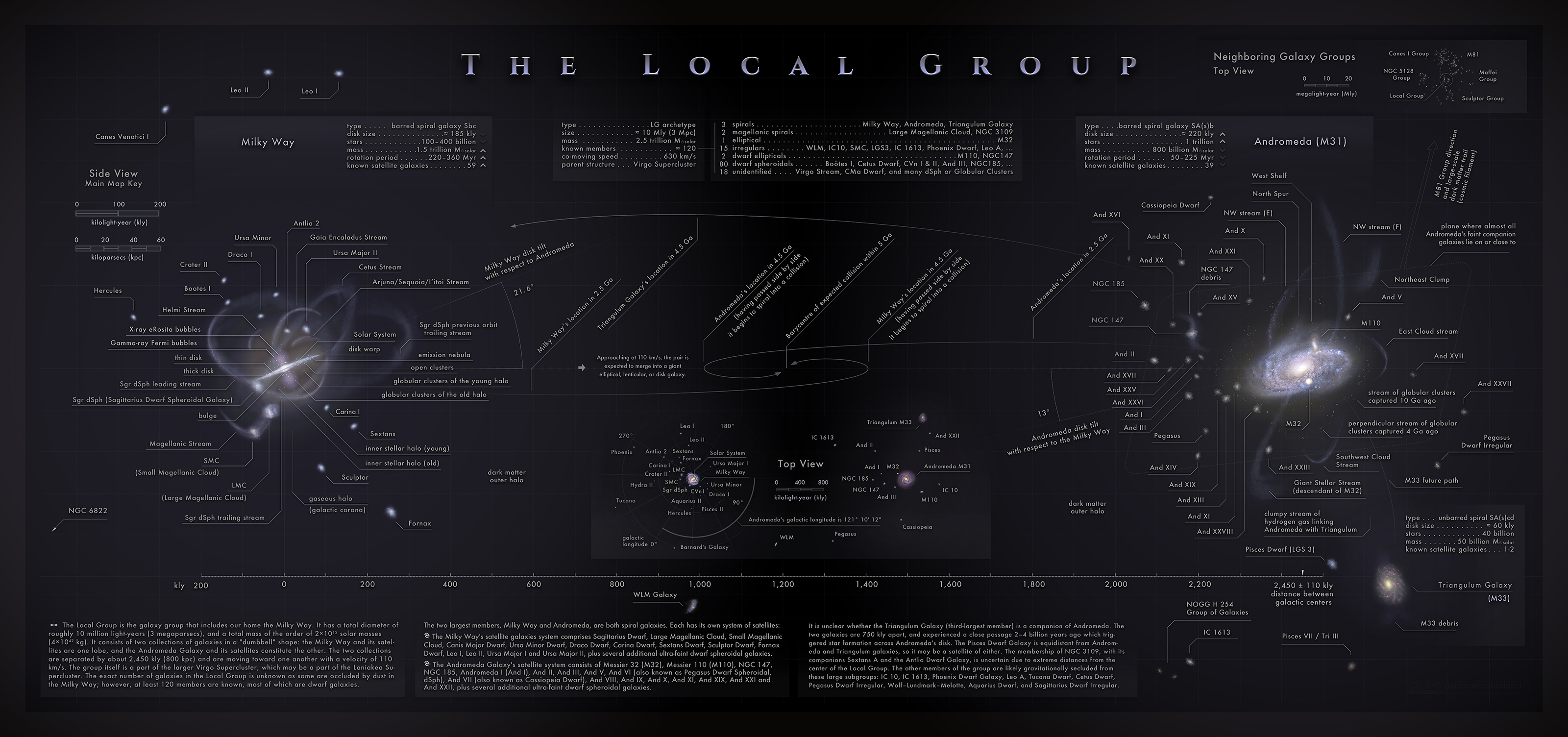Presenting a frontal panorama of the Solar System’s ensemble, meticulously scaled to showcase the relative sizes of planets, dwarf planets, and significant moons. This cosmic portrait integrates the Pleiades star cluster proportionally with the solar visage. The compilation utilizes the highest quality images obtained of each solar system object depicted, providing a clear and realistic visual reference of our cosmic vicinity’s scale.
The planets and moons of the solar system are depicted here on a histogram-like scale, where sizes are shown in consistent intervals rather than the actual uneven progression of scales.
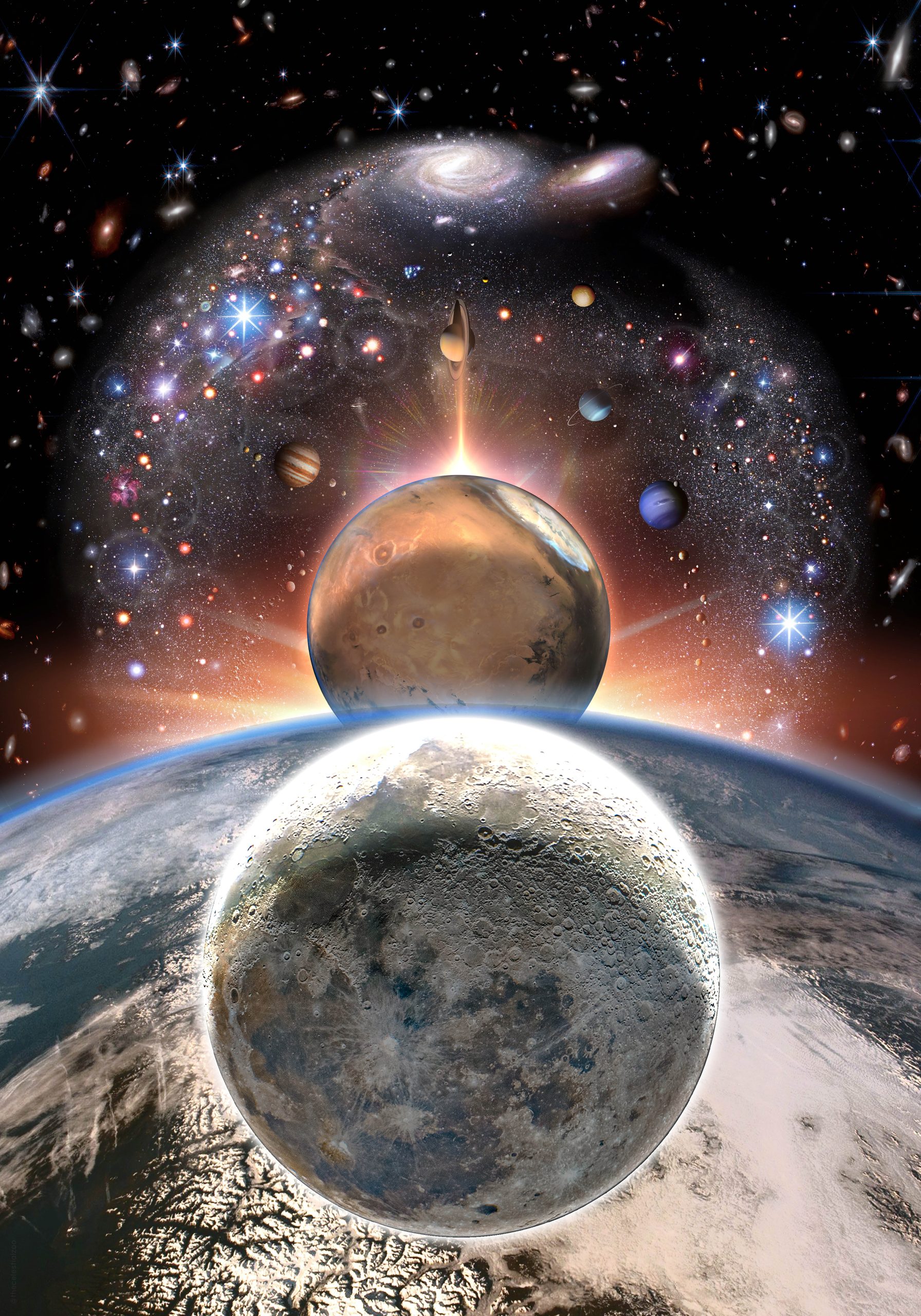
Presented below are three additional side views of our cosmic neighborhood, depicted to scale with an extraordinary level of detail:

[bit.ly/earthmoondiagram]
Detailed diagram showing objects between the Earth and the Moon including artificial satellites, relevant sized near-Earth passing asteroids (past and future), and the different distances the Moon can take from Earth.
[bit.ly/milkyandro]
A side view of the Local Group of galaxies that contains the Milky Way, Andromeda and other 120 minor galaxies. The main map is accompanied by technical sheets and expected future path for major group members, top view and a neighboring groups scheme. Developed in July 2022 by Pablo Carlos Budassi. Last update: 5 Jul 2022.
* Become a Patron of this project for $2/mo and get full access to all our high-resolution works including the ones on this page.

